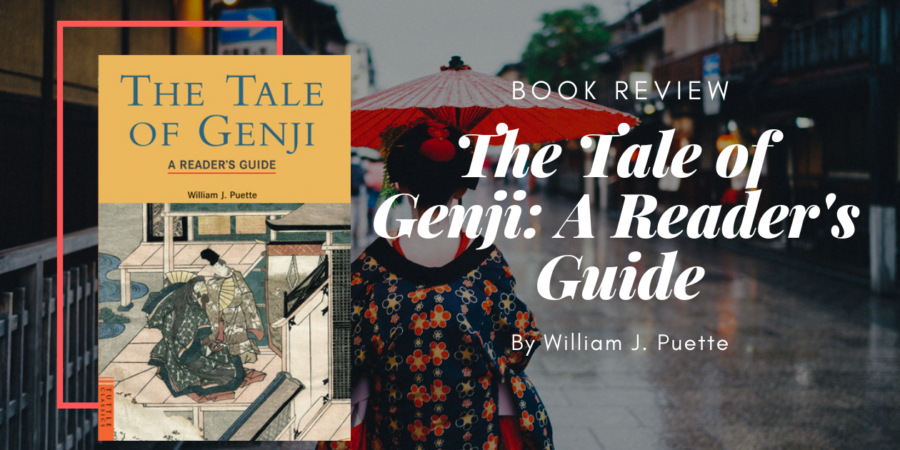I had this while reading the unabridged version of The Tale of Genji and it was honestly a lifesaver! I’m so glad I managed to find a copy of this and The Tale of Genji at the same time.
The Reader’s Guide can be broken into three parts:
Part 1 is titled The World of Genji (same as my tag for this series of books) and it’s about life at Court, their religion, what aware is, and a bit about Murasaki Shikibu and the different translations. Since this book is pretty old, the translations section only covers Suematsu’s, Waley’s, and Seidensticker’s. If you’re looking for info on Tyler and Washburn’s translations, you’re out of luck.
What I learnt from this part more about daily life. The book says that “so much was the woman’s world shuttered and protected from the light of day, that simple identification could often be a difficult feat.” And this twilight world that they lived in would have added extra meaning to Genji’s title as “the shining prince.” Although identification of women was difficult, there were two ways that people used to figure out who was who:
- Their robes: when it projects “beneath their protective screens or from their carriage doors in transit”, this is called “idashi-guruma”
- Their scents, which were created by their wearer. It brings even more meaning to Kaoru and Niou’s names, that they be recognised by their scents.
By the way, their robes were so formidable that when talking about Nyosan (one of Genji’s wives), Seidensticker translates a passage thus:
“Their lady was such a pretty little child of a thing, reduced to almost nothing at all by the brilliance of her surroundings. It was as if there were no flesh holding up the great mounds of her clothing.”
With regards to music, “the most frequently described instruments in The Tale of Genji are the koto or zither, the lute, and the flute; and of these, the koto is most often cited.” The koto was originally from China so this is another avenue that could be explored.
I thought this first part was a pretty neat summation of Heian-era Japan. It’s not as detailed as The World of the Shining Prince, but if you just want to know enough to appreciate the book, this will do.
Part 2 of the book has a detailed synopsis and commentary on the first nine chapters, and then a brief synopsis of each of the following chapters. I actually found the brief summaries of the later chapters to be very useful because I could only read The Tale of Genji in pockets of time and the summaries helped me to keep track of what was going in. When I got lost, it was easier to read the summary of the preceding few chapters to refresh my memory than to go back and reread the previous few chapters.
Part 3 is for further study and it contains some questions. It’s probably the shortest part and I just glanced through it.
The book also has a few appendixes, including a list of characters that was also very useful in helping me keep track of who was who.
This is a pretty short book but I would highly recommend it to anyone planning to read The Tale of Genji for the first time. Even if you’re reading the world for pleasure, it would make sense to get a feel of the Heian-era Japan, and have something to help you as you navigate the text. I would recommend reading Part 1 before starting on The Tale of Genji, and referring to the summaries and appendixes as needed while reading the book.
